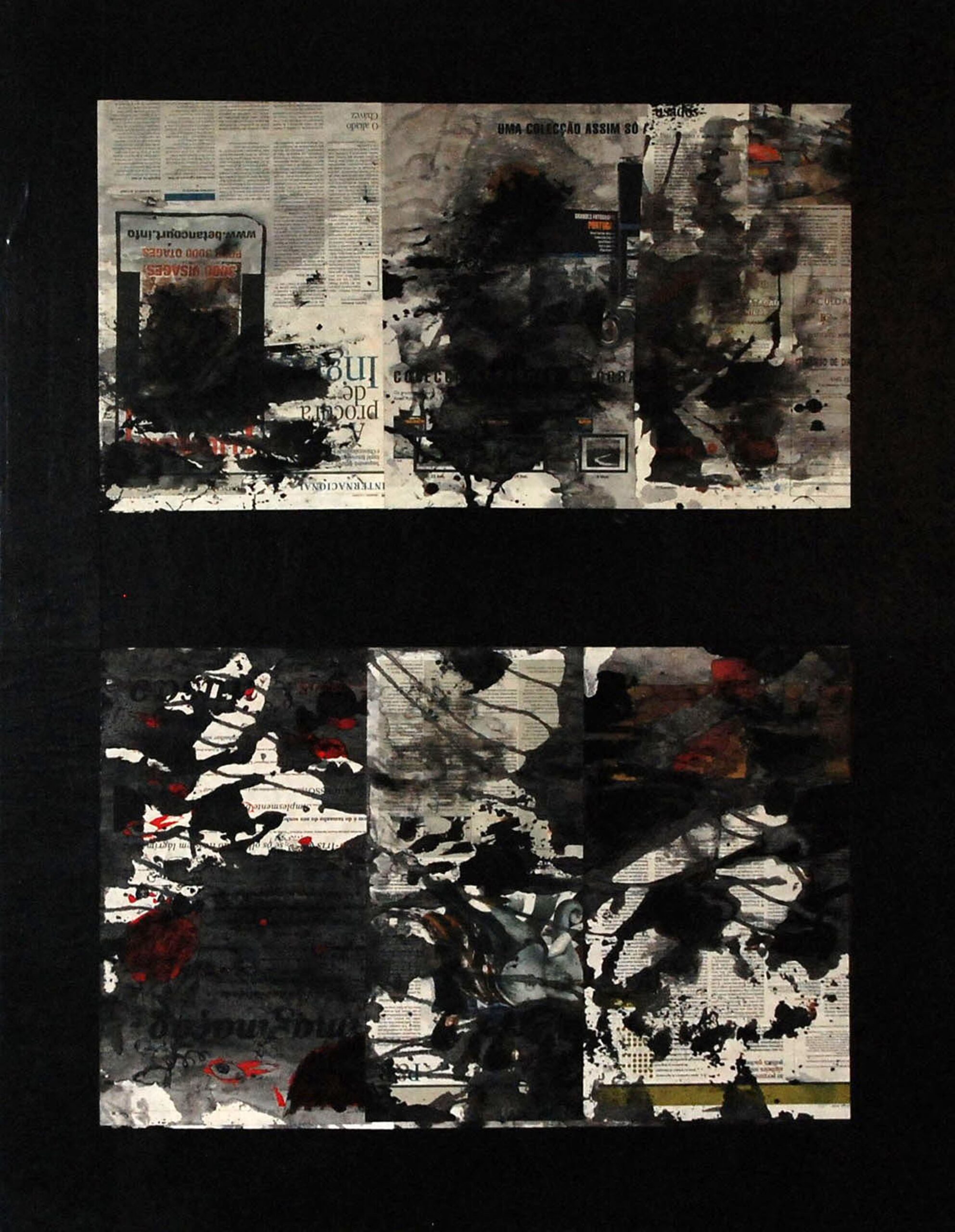In the vast field of visual arts, night has always been a potent metaphor. From painting to photography and cinema, it evokes everything from tranquility to tension, peace to looming tragedy. In the work of Portuguese artist José Brito, the night is not merely a backdrop—it is a language. Through layered collages, darkened palettes, and the fragmented memory of urban life, Brito speaks in tones of shadow and silence, crafting visual poems that whisper rather than proclaim.
Aesthetic of Darkness: The Climate of the City at Night
José Brito’s works draw the viewer into a nocturnal world where architecture becomes anonymous, angles turn Kafkaesque, and windows close off the possibility of human presence. His cityscapes—often suggested rather than fully shown—do not romanticize the night. There is no moonlight mystique here, no comforting fog. Instead, the blackness is dense, enveloping, and expressive. The facades, gables, and alleyways captured in photographic fragments lose their specificity, becoming every city and no city all at once.
This depersonalization is key. Brito’s night is not one of dreams but of truths we dare not name in daylight. His compositions speak of absence, silence, and isolation, but also of resilience. His work contains tension, not from dramatic flourish but from the stillness of things—walls that don’t echo, words that don’t respond, windows that no longer open.
Method and Materials: A Study in Complexity
Brito is not content with surface aesthetics. His work is the result of intense research and experimentation, drawing from painting, photography, graphic communication, and written text. He employs acrylics as his primary paint medium, but his true canvas is layered: newsprint, magazine cutouts, billboard snippets, torn photographs—materials often discarded or overlooked.
These elements are meticulously selected and arranged, not merely for their visual impact but for their semantic resonance. They speak of the world—its conflicts, crises, absurdities, and contradictions. The result is not chaotic but rather methodically coherent, like a poetic archive of modern life.
There is a distinctly tactile dimension to Brito’s collages. The materials are ductile, vulnerable, and fragmented. They are subject to tears and cuts, yet they survive the process of being reborn into new meaning. Paint is applied over these collaged surfaces not to conceal but to integrate. Stains, veils, and black gestures form a cohesive surface where glimpses of the underlying world still peek through—wounded but intact.
Poetic Juxtapositions: Image and Word Entwined
Words play a central role in José Brito’s visual language. Extracted from newspapers and magazines, these snippets of text function as both message and texture. They provide a narrative counterpoint to the imagery—sometimes echoing the sentiment, other times contradicting it. News about wars, daily routines, banal happenings, and political developments become components of the artwork, transformed from disposable content into enduring symbols.
The interplay between word and image creates a poetic rhythm, a kind of visual prose. The viewer is invited to read not only the text but also the silences around it. These silences are pregnant with meaning: histories not told, voices muffled, truths faded in ink. They exist within the frame, much like the obscured alleys and shuttered windows of his urban nightscapes.
The Night as Witness and Veil
Brito’s canvases are largely painted in blacks—Indian ink and diluted acrylics—that offer a transparency both literal and metaphorical. They veil and reveal, obscure and suggest. These black surfaces are not dead spaces; they are dynamic. They reflect the quiet pulsation of cities at night—the slow breathing of deserted streets, the flicker of light behind a curtain, the memory of a voice no longer heard.
This atmosphere recalls cinematic references, particularly Andrei Tarkovsky’s Stalker, where a traveling shot glides slowly through mysterious terrain. Artist’s work similarly navigates psychological and emotional spaces. His viewers journey across textural landscapes where meaning is fragmented but palpable, where water drips and whispers from the past float just beneath the surface.
The artist constructs visual meditations on time and memory—images not frozen but slowly fading, like memories recalled at night. The viewer becomes both voyeur and participant in a world suspended between visibility and disappearance.
Artistic Lineage and Intellectual Pursuit
José Brito’s approach is grounded in a robust academic and artistic foundation. Born in 1958 in Lobão da Beira, Tondela, he studied at the António Arroio Decorative Arts School in Lisbon and later earned a degree in Painting from the University of Lisbon’s Faculty of Fine Arts. He holds a Master’s in Art History from Lusíada University, and this scholarly background is evident in the philosophical depth of his work.
He is part of a generation that came of age in the aftermath of modernism’s deconstruction. For her, art is not about decoration or dogma but about inquiry—an ongoing dialogue between the self and the world. His research never settles for linear answers. Instead, it poses layered questions: What do we retain? What do we erase? How do we reconstruct meaning from fragments?
A Life in Exhibitions: A Global Artistic Voice
Since his first exhibition in Lisbon in 1994, he has shown his work internationally—from Brazil to Italy, Spain to Ukraine, and more recently in Austria and Portugal. His presence across continents is a testament to the universality of his vision. Cities change, languages differ, but the shadows remain familiar.
Whether exhibited in a gallery in Berlin or a cultural festival in Vienna, Brito’s work resonates with those who recognize the complexity of the present moment—its beauty and its decay, its silence and its noise.
In conclusion, José Brito’s art is a patient unveiling. It invites viewers not to look quickly, but to observe deeply, to feel the slow weight of black paint, the whisper of torn paper, the hush of a street at midnight. His canvases, like forgotten cities, are full of stories that resist the light. They are about words and images, yes—but above all, about nights that never fully end.


